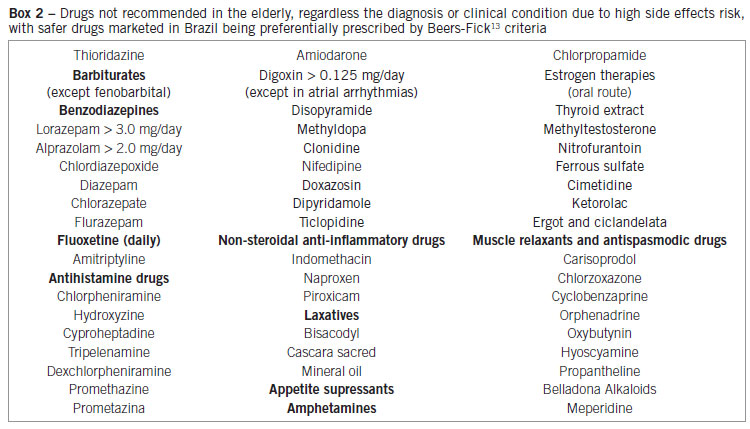OBJECTIVE: To compare PRISCUS with Beers-Fick in detecting potentially inappropriate medication (PIMs) in elderly at their first outpatient geriatric visit. METHODS: Retrospective medical record analysis by PRISCUS and Beers-Fick adapted to Brazilian pharmacopoeia, comparing the finding of PIMs at the first outpatient geriatric visit by both criteria. RESULTS: Cases had mean age of 77.4 ± 7.7 years (64 females and 36 males), and mean consumption of 3.9 ± 2.5 drugs. This study found statistical significance for the numbers of women using benzodiazepines and men using salicylates. The mean was 0.5 ± 0.7 PIMs/patient by Beers-Fick criteria and 0.7 ± 0.8 PIMs/patient by PRISCUS. Medications most often reported by Beers-Fick criteria were: benzodiazepines, methyldopa and ergot-derived drugs. Medications most often reported by PRISCUS criteria were: benzodiazepines, antihypertensive drugs, and tricyclic antidepressants. No statistical significance was found when the number of elderly patients with PIMs was compared between both criteria. Statistical significance was found (PRISCUS versus Beers-Fick) for the consumption of long acting benzodiazepines and laxatives. Both criteria do not include drugs such as vitamins, herbal medications, and eye drops, reported by a percentage of cases. CONCLUSION: Both criteria are useful to prevent PIMs in the elderly, with PRISCUS being more updated and comprehensive, but they are not complete for the Brazilian outpatient reality.
Iatrogenic disease; prescription drugs; elderly care; medication reconciliation



